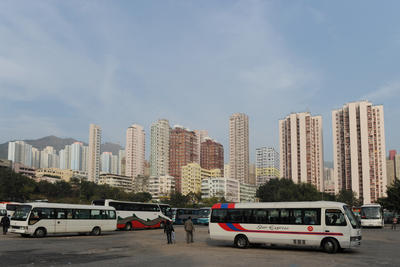World population growth peaked at a little over 2 per cent per annum in the 1960s and has declined steadily to half that today. The annual increase in absolute numbers peaked in the early years of this century; and although that too is now declining it is still close to its peak of 80 million a year (roughly the size of Germany). With about 1.6 billion people living today in East Asia and another 0.6 billion in Southeast Asia, this region accounts for nearly one third of the world’s 7 billion people. How is population growth playing out in this region, and what are the policy implications of the underlying dynamics?
The world is demographically divided and population growth is unevenly distributed. The so-called more developed regions (MDRs) — Europe, North America, Australia/New Zealand and Japan — went through their demographic transitions (from high to low birth and death rates) much earlier than the less developed regions (LDRs). In the 40 years between 2010-50 the developing countries will probably grow by more than 2 billion, the developed by less than 40 million. East Asia accounted for 26 per cent of the world’s population in 1950, 24 per cent in 2000 and is projected to represent only 17 per cent by 2050; the corresponding figures for Southeast Asia are 7, 8 and 8 per cent, respectively. By mid-century Southeast Asia’s population may have almost stopped growing, while that of East Asia is expected to show negative growth.
But each grouping of countries is far from homogeneous. East Asia grew by a little over 120 per cent between 1950-2000, but is expected to grow by less than 10 per cent between 2000-2050; Southeast Asia grew almost 200 per cent between 1950-2000 and will still grow by another 50 per cent by 2050. These differences in growth rates are due mainly to variations in fertility. Fertility in East Asia declined between 1950-2000 from a total fertility rate (TFR), that is, the average number of live births per woman, of more than 5 to less than 2; the TFR is less than 1.5 in Japan and South Korea. The TFR has also declined in Southeast Asia but it is still close to 2.5 (although well below 2 in Singapore and Thailand). Population growth in East and Southeast Asia in the coming decades will be due largely to population momentum (the large proportion of women of child-bearing age), not because of high fertility levels in the present.
A major consequence of low fertility, combined with improvements in health and life expectancy, is population ageing. The proportion of the population aged over 65 in East Asia represented just 4 per cent of the total population in 1950; by 2000 it was 8 per cent and by 2050 it will likely be 25 per cent. In Southeast Asia the corresponding figures are 4, 5 and 17 per cent, respectively. In Japan the size of the working-age population (15-64 years) is already declining, and the same will happen in China by the 2020s. Maintaining equitable economic development in a rapidly ageing country requires new institutional arrangements.
Most portentous perhaps are trends in urbanisation. In 1950 just over 50 per cent of the MDRs’ population was urban, but in the LDRs it was less than 20 per cent; today the figures are close to 75 and 45 per cent, respectively. And by 2050 we can expect more than 85 per cent of the population to be urban in the MDRs and at least 65 per cent in LDRs. Cities are important engines of economic growth but they can — and often do — have deleterious social and environmental impacts as well. In most countries of East and Southeast Asia over the next 40 years the urban population will swell and the rural will decline. In East Asia the urban population will grow by more than 420 million, in Southeast Asia by about 260 million.
Ongoing changes like these in the relative size, structure and distribution of national populations have important implications for the region’s policy makers, especially in the context of overall population growth. The challenge is to fashion new development paths for these changing populations to make it possible to raise prosperity and reduce poverty, while at the same time introducing more pollution abatement measures and significantly expanding environmental protection. The end of population growth in the region may be in sight, but past and present growth means this challenge will need to be accomplished on a scale and at a speed unprecedented in human history.
Adrian C. Hayes is Adjunct Associate Professor and Zhongwei Zhao is Professor at the Australian Demographic and Social Research Institute, Australian National University.

